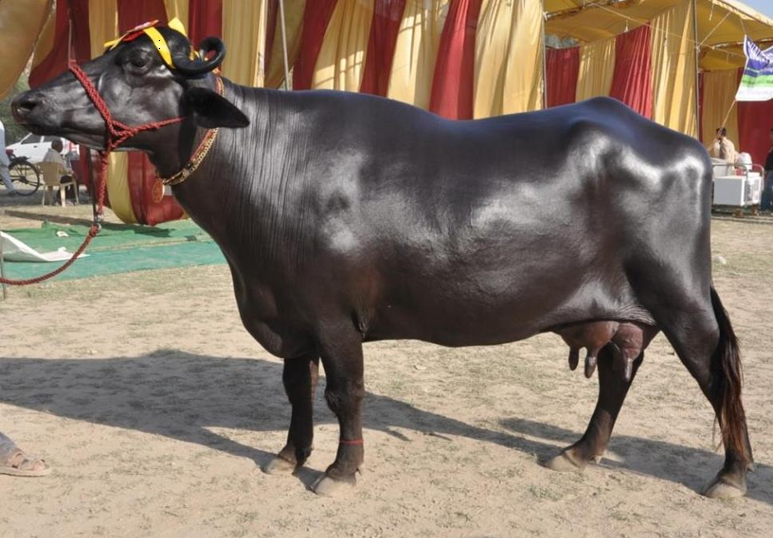The Murrah buffalo, renowned for its high milk yield and superior dairy quality, is one of the most prized buffalo breeds in the world. Originating from Haryana, India, this breed has gained global recognition for its exceptional milk production, adaptability, and economic value in dairy farming.
In this blog post, we explore the origin, characteristics, benefits, and care of the Murrah buffalo, along with its nutritional contributions to the dairy industry.
Origin and Distribution
The Murrah buffalo, also known as “Kali” or “Delhi buffalo,” originated in the Rohtak, Hisar, and Jind districts of Haryana, as well as parts of Punjab, India 4. It is now widely reared in Pakistan, Brazil, Italy, and other dairy-rich regions due to its high milk fat content and resilience in various climates 7.
Physical Characteristics
Murrah buffaloes are easily identifiable by their distinct features:
-
Jet-black body with occasional white markings on the tail and face.
-
Short, tightly curled horns (unlike other buffalo breeds).
-
Strong, muscular build—adult males weigh 550–700 kg, while females weigh 450–600 kg.
-
Well-developed udder with long teats, ideal for milking 4.
Milk Production & Nutritional Benefits
Murrah buffaloes are elite dairy producers, yielding 1,600–1,800 liters per lactation cycle (300 days) with an impressive 7–8% fat content—much higher than cow milk 48.
Nutritional Comparison (Per 100 ml)
| Nutrient | Murrah Buffalo Milk | Cow Milk |
|---|---|---|
| Fat | 6.9 g | 3.4 g |
| Protein | 4.5 g | 3.2 g |
| Calcium | 195 mg | 120 mg |
| Calories | 97 kcal | 61 kcal |
Health Benefits of Murrah Buffalo Milk
-
Rich in calcium & phosphorus → Supports bone health and prevents osteoporosis 2.
-
High protein content → Aids muscle growth and repair 11.
-
Lower cholesterol than cow milk → Better for heart health 14.
-
Contains A2 beta-casein → Easier digestion for lactose-intolerant individuals 11.
Feeding & Care Requirements
Diet
Murrah buffaloes thrive on a balanced diet consisting of:
-
Green fodder (maize, wheat, oats).
-
Oilseed cakes (soybean, mustard).
-
Mineral supplements (calcium, phosphorus, salt) 4.
Shelter & Health Management
-
Clean, well-ventilated sheds to protect from extreme weather.
-
Regular vaccinations (foot-and-mouth disease, anthrax, black quarter).
-
Deworming every 30 days to prevent parasitic infections 4.
Breeding & Reproduction
-
First calving at 3–5 years (after a 305–320-day gestation period).
-
Artificial insemination (AI) is commonly used for genetic improvement 7.
Economic Importance
Murrah buffaloes are highly profitable due to:
Premium milk production → Used in ghee, cheese (mozzarella), and yogurt.
High demand in global markets (India, Pakistan, Italy).
Strong resale value of high-yielding breeds 810.
Challenges in Murrah Buffalo Farming
Despite their advantages, farmers face some hurdles:
-
High maintenance costs (feed, healthcare).
-
Longer gestation period compared to cows.
-
Heat stress susceptibility in tropical climates 7.
Final Thoughts
The Murrah buffalo is a dairy powerhouse, offering nutrient-rich milk, economic stability, and resilience in farming. Whether you’re a dairy farmer or a health-conscious consumer, this breed plays a vital role in sustainable agriculture and nutrition.










